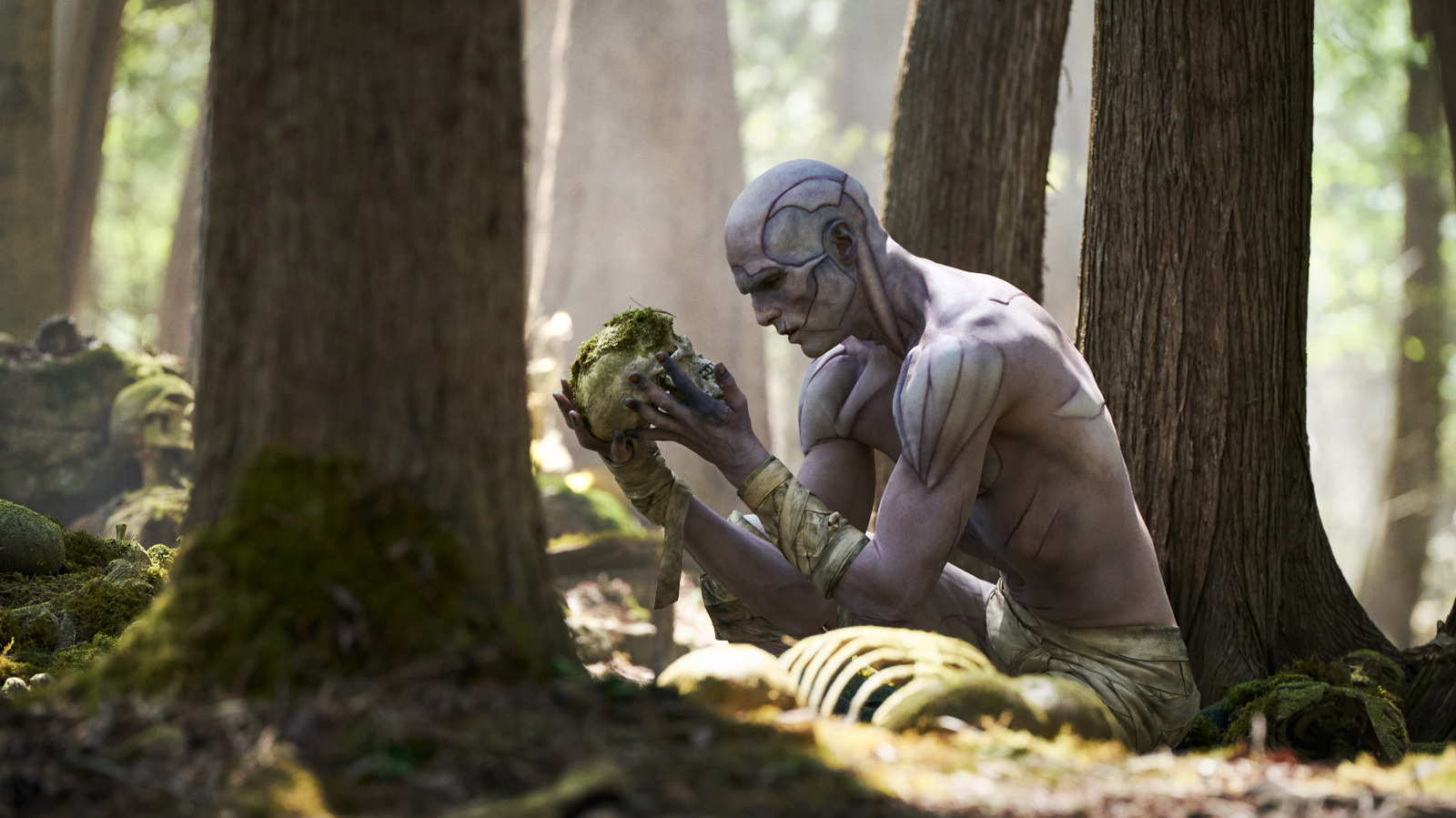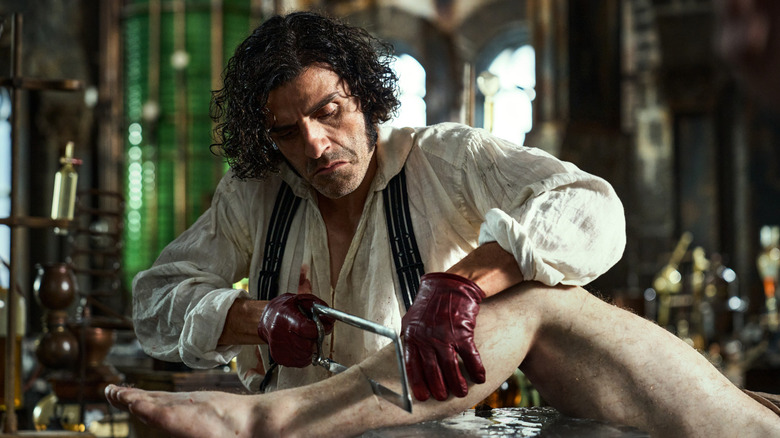For essentially the most half, Guillermo del Toro’s “Frankenstein” is a loyal adaptation of Mary Shelley’s 1818 novel. Sure, there are loads of narrative modifications — characters eliminated or condensed, changes to the Creature (Jacob Elordi), and tweaks across the body narrative, amongst different issues. However the essence of the story — the romantic, gothic tone, the thematic give attention to life and creation, and many others. — is undamaged, and it carries the movie via beautiful shot after beautiful shot.
While you’re adapting a piece of fiction that is over 200 years previous, nonetheless, the invitation to go meta is tough to disregard. There have been so many “Frankenstein” motion pictures, to not point out different books, TV sequence, video video games, Frankenstein comics, and so forth, all pulling from the identical legendary supply materials. And whereas del Toro’s model would not break the fourth wall in any huge flashy methods, it does embrace one refined element acknowledging the real-world historical past of the story.
In the course of the film, after escaping Victor Frankenstein (Oscar Isaac), the Creature shacks up on a farm within the countryside. When all however the aged, blind patriarch of the household depart for a months-long looking expedition, he and the Creature develop into mates, with the previous man even educating him to learn. Close to the tip of this montage, the Creature could be heard studying a very related poem — the well-known sonnet “Ozymandias,” which was written by Mary Shelley’s husband, the well-known Romantic poet Percy Shelley. And whereas this inclusion would possibly appear to be a easy nod to the creator, mixing the true world and the fictional one, the chosen poem can also be notably poignant for the story of the movie.
Ozymandias is concerning the hubris of supposedly nice males
In case you’ve by no means studied Romantic poetry, otherwise you weren’t paying consideration in Eleventh-grade English class, you most likely know “Ozymandias” greatest for its namesake episode in “Breaking Dangerous” — one of many acclaimed present’s most well-known, and sometimes introduced up as a pinnacle of the trendy “status TV” period. That episode, written and directed by the all-star duo of Moira Walley-Beckett and Rian Johnson, particulars the collapse of an empire and the person who constructed it, completely mirroring the themes of Shelley’s sonnet.
The poem itself describes a crumbling desert statue of Egyptian Pharaoh Ramesses II, whose Greek title is Ozymandias. The statue’s desiccated nature, mixed with the encircling absence of every other indicators of the useless king’s empire, conflict with the lingering inscription, which reads, “My title is Ozymandias, King of Kings; Look on my Works, ye Mighty, and despair!”
Percy’s poem was first revealed on January 11, 1818 — simply 10 days after his spouse revealed “Frankenstein.” Whereas the 2 texts have been written as independents, they match collectively fairly nicely, and del Toro attracts a intelligent parallel between the hubris of nice males depicted within the sonnet and the ego-driven tragedy that Victor Frankenstein creates.
Is it paradoxical in a reality-bending solution to carry the partner of a narrative’s creator into the world of the story itself? Sure, however come on, that is all in good, fourth-wall-breaking enjoyable. And actually, the poem simply suits too nicely as soon as hear it within the context of “Frankenstein.”


